Sensory play meets explorative science with this nature-based backyard science experiment.
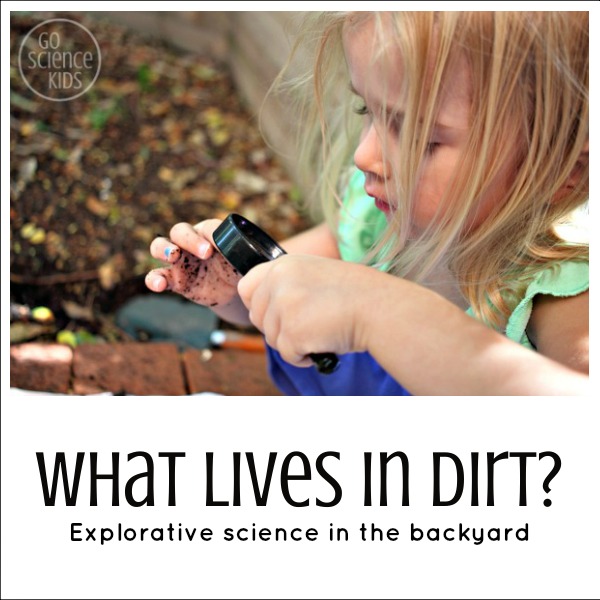
Science experiments don’t have to be complicated! Sometimes the simplest things can enthrall young kids. My 3.5 year old daughter Bumble Bee loved this backyard dirt observation activity so much that we’ve done it several times now, and it’s been interesting to notice how the results have varied each time.
My daughter’s interest in the scientific method has been recently kindled by the book 11 Science Experiments That Failed, and so we followed the scientific method for this backyard dirt experiment too, which of course, makes it feel extra science-y. 🙂
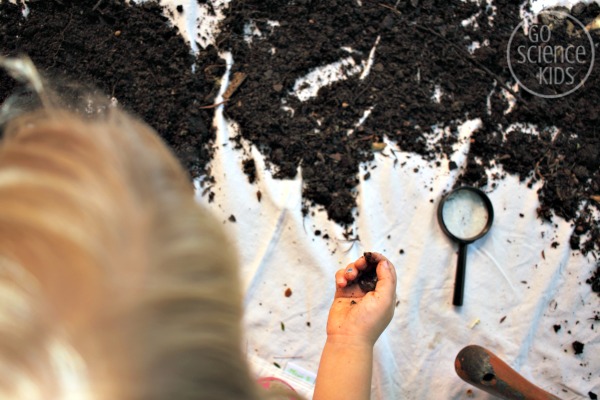
Question:
What lives in the dirt in our backyard?
Hypothesis:
Worms live in dirt.
What You Need:
- old white sheet
- magnifying glass
- paper and pencils
- specimen tray (ours is a reused wooden letters storage tray)
- spade
- dirt
- keen preschooler
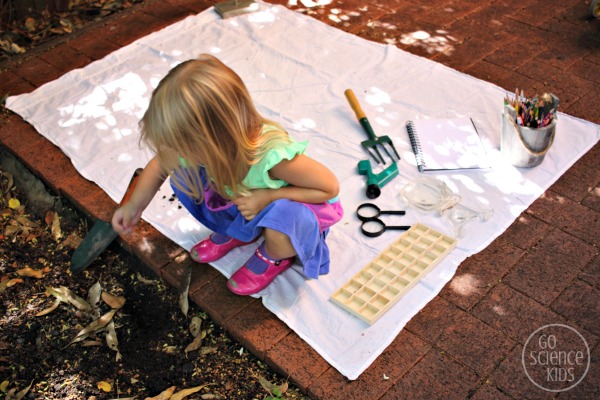
What To Do:
1. Dig dirt with spade.
2. Put dirt on sheet.
3. Sort through dirt to see if there are any living creatures. Study them with magnifying glass.
4. Record (or ask an adult to record) findings.
5. Dig more dirt and repeat.
5. Tally results at end of the dirt play experiment. Compare with previous results.
What happened:
When soil was moist, many (dozens and dozens) of worms and one slater (aka woodlice, roly poly or pill bug) were found. When soil was dry, few worms were found, and no other insects.
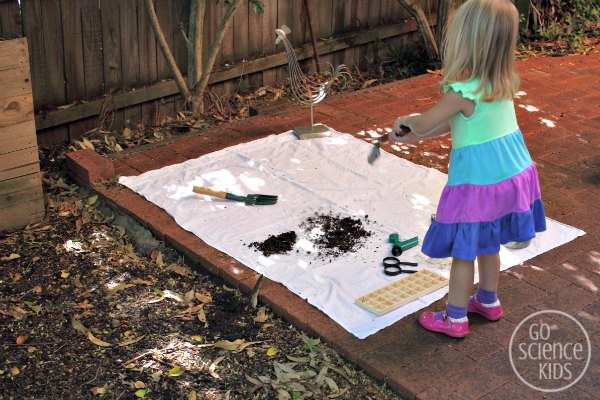

Honestly, I can’t emphasis enough how much Bumble Bee loved this activity. “What lives in dirt?” might seem like an obvious question to us, but Bumble Bee loved being able to verify her hypothesis (that worms live in dirt) for herself. She did sometimes ask for help with the digging part (perhaps our spade was a little big for her), but she really loved sorting methodically through the dirt to see if there were any worms in that particular load. When our sheet was too full of dirt, we emptied the ‘old’ dirt back into the same patch of garden and started digging again.
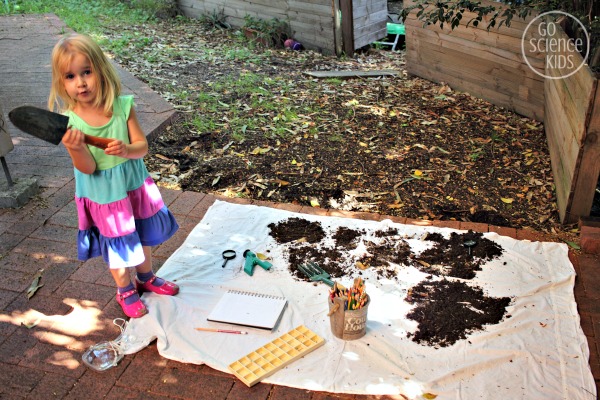
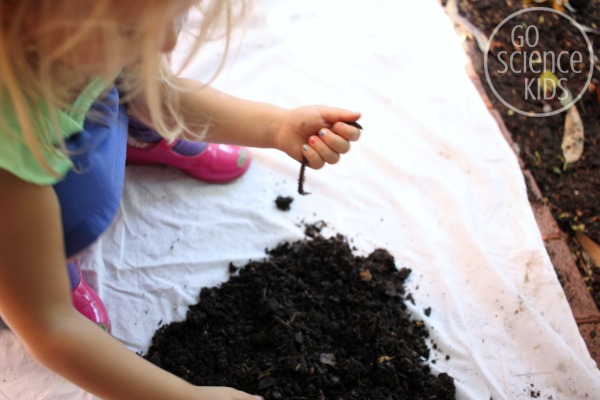

We found many, many worms. We talked about what sort of things worms would need in their habitat. We talked about how worms need food, water, and shelter (dirt and leaf litter) to protect them from the birds. We talked about how they wouldn’t be able to live outside of the dirt for long. We decided to rehome a few into our worm farm, and carrying worms back and forth from the garden to the worm farm became part of the play.
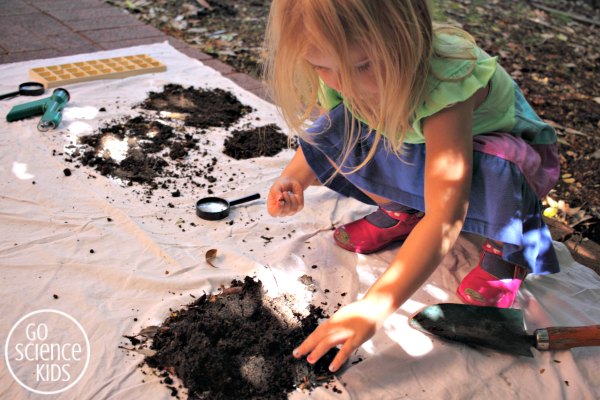
We also found one slater (which, depending on where you live in the world, are also called roly polys, pill bugs, woodlice or potato bugs). Bee wasn’t expecting to find anything other than worms, and so she was pleasantly surprised. (I, on the other hand, was surprised at the lack of insect diversity in our soil!) We duly recorded it, and then put it (all rolled up) into her specimen tray, along with a few of the smaller worms. Every time Bee turned around, one of her specimens escaped. One of the challenges of field science!
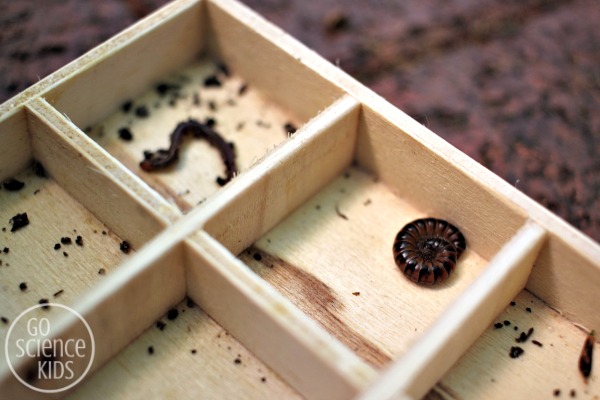
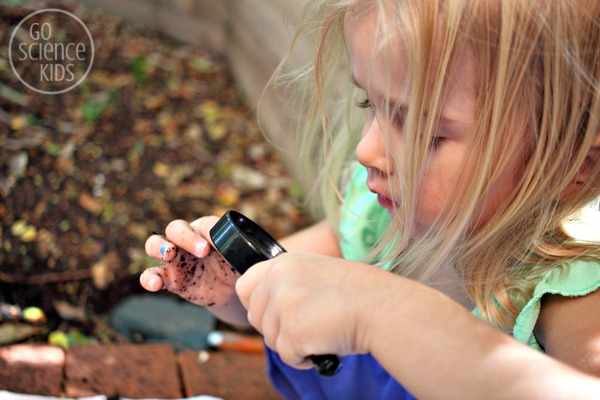
We repeated this experiment again several weeks later, after a particularly dry spell, and that time we hardly found any worms at all. We hypothesised that this may be because the habitat in our backyard top soil no longer catered to what worms need, and that all the worms had moved to a wetter part of the soil that was better suited to their requirements.
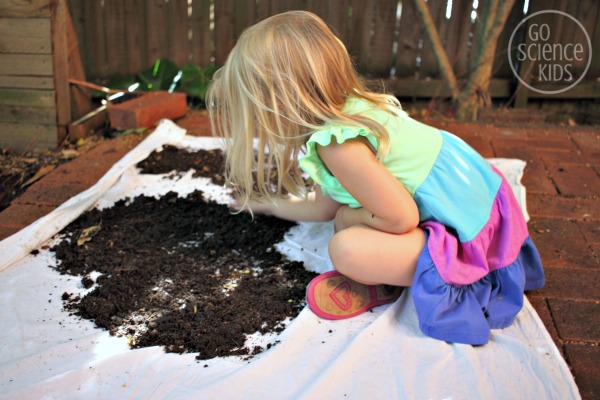
This would make a great Earth Day science experiment. In fact, we actually did it just before Earth Day, and then used the same soil to make our Planet Earth craft, except I hadn’t a chance to write it up until now… (Sorry – been busy and all that!)
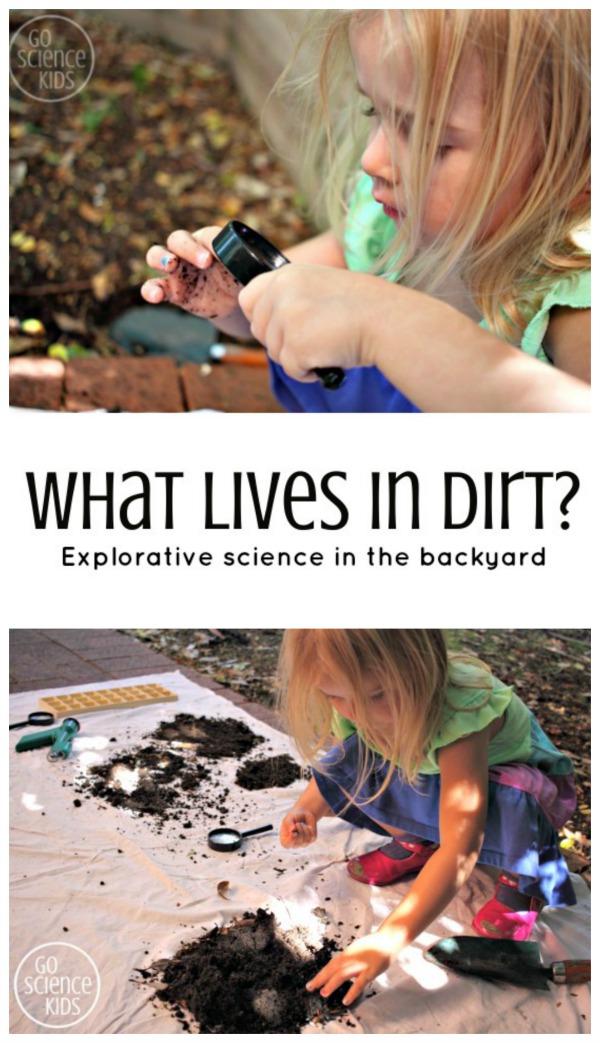
For more nature-based science ideas, you might also like:
- Colour-changing flowers experiment
- Can you start a fire with a magnifying glass (which I think is important to read before you bring magnifying glasses outside, especially if you live in sunny Australia like we do).
* This post contains affiliate link(s) to similar products used. An affiliate link means I may earn advertising / referral fees if you make a purchase through my link, without any extra cost to you. It helps keep this little blog afloat. Thank you for your support.

#
My kids would totally love this even though I find it a little disgusting. lol 🙂 Thanks for the great idea.
#
Somehow they love all the disgusting stuff, huh? 🙂
#
#
#
#
#
#
#
#
#